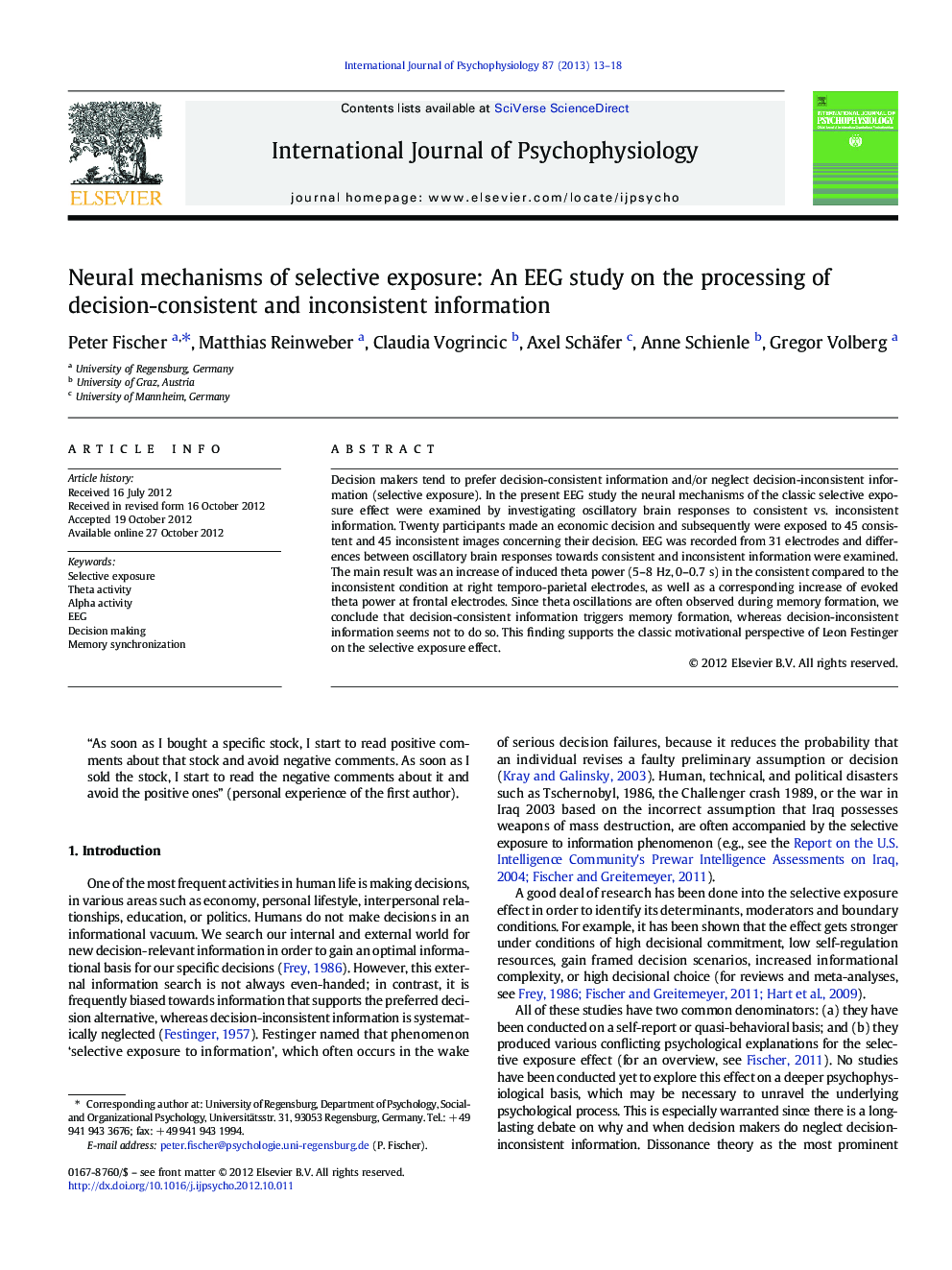| Article ID | Journal | Published Year | Pages | File Type |
|---|---|---|---|---|
| 930463 | International Journal of Psychophysiology | 2013 | 6 Pages |
Decision makers tend to prefer decision-consistent information and/or neglect decision-inconsistent information (selective exposure). In the present EEG study the neural mechanisms of the classic selective exposure effect were examined by investigating oscillatory brain responses to consistent vs. inconsistent information. Twenty participants made an economic decision and subsequently were exposed to 45 consistent and 45 inconsistent images concerning their decision. EEG was recorded from 31 electrodes and differences between oscillatory brain responses towards consistent and inconsistent information were examined. The main result was an increase of induced theta power (5–8 Hz, 0–0.7 s) in the consistent compared to the inconsistent condition at right temporo-parietal electrodes, as well as a corresponding increase of evoked theta power at frontal electrodes. Since theta oscillations are often observed during memory formation, we conclude that decision-consistent information triggers memory formation, whereas decision-inconsistent information seems not to do so. This finding supports the classic motivational perspective of Leon Festinger on the selective exposure effect.
